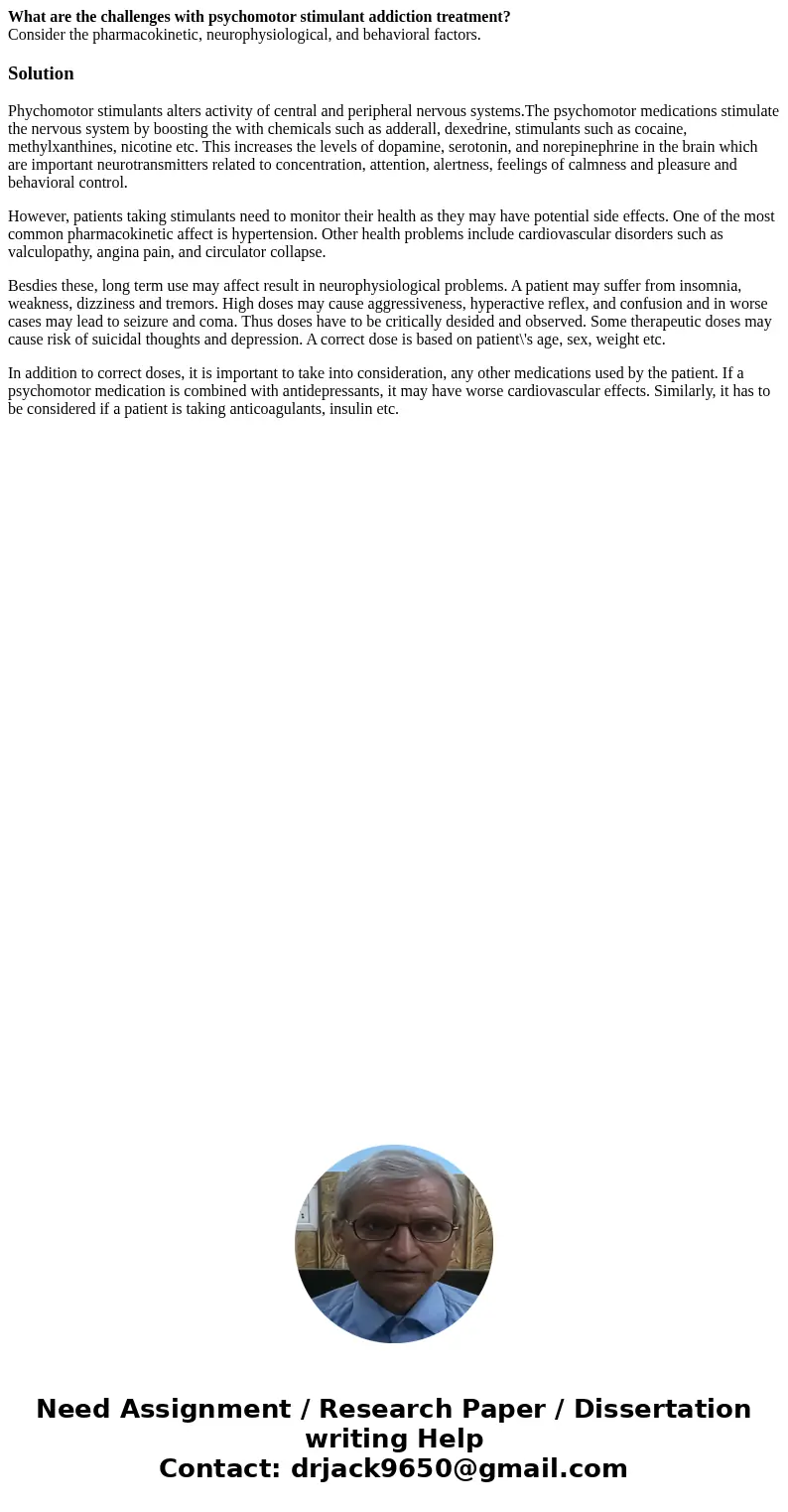What are the challenges with psychomotor stimulant addiction
What are the challenges with psychomotor stimulant addiction treatment?
Consider the pharmacokinetic, neurophysiological, and behavioral factors.
Solution
Phychomotor stimulants alters activity of central and peripheral nervous systems.The psychomotor medications stimulate the nervous system by boosting the with chemicals such as adderall, dexedrine, stimulants such as cocaine, methylxanthines, nicotine etc. This increases the levels of dopamine, serotonin, and norepinephrine in the brain which are important neurotransmitters related to concentration, attention, alertness, feelings of calmness and pleasure and behavioral control.
However, patients taking stimulants need to monitor their health as they may have potential side effects. One of the most common pharmacokinetic affect is hypertension. Other health problems include cardiovascular disorders such as valculopathy, angina pain, and circulator collapse.
Besdies these, long term use may affect result in neurophysiological problems. A patient may suffer from insomnia, weakness, dizziness and tremors. High doses may cause aggressiveness, hyperactive reflex, and confusion and in worse cases may lead to seizure and coma. Thus doses have to be critically desided and observed. Some therapeutic doses may cause risk of suicidal thoughts and depression. A correct dose is based on patient\'s age, sex, weight etc.
In addition to correct doses, it is important to take into consideration, any other medications used by the patient. If a psychomotor medication is combined with antidepressants, it may have worse cardiovascular effects. Similarly, it has to be considered if a patient is taking anticoagulants, insulin etc.

 Homework Sourse
Homework Sourse